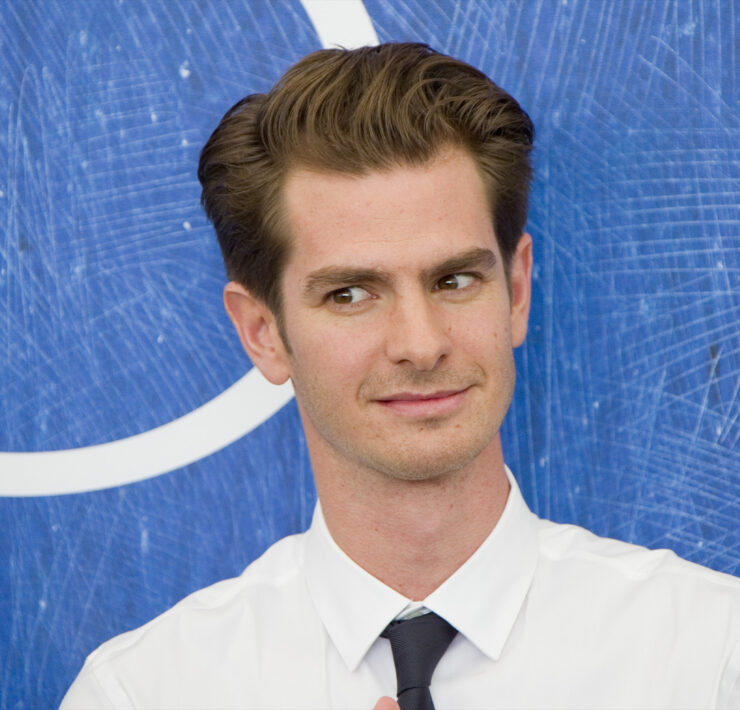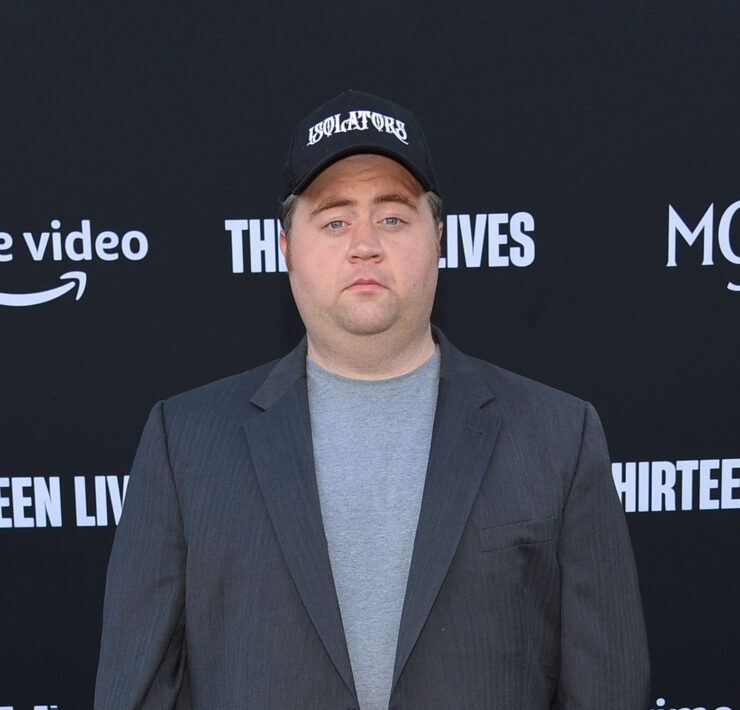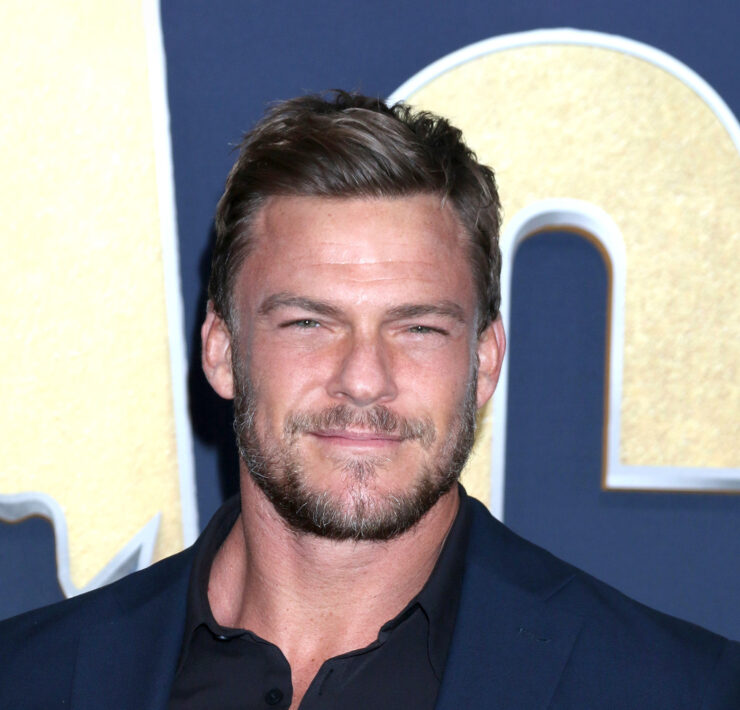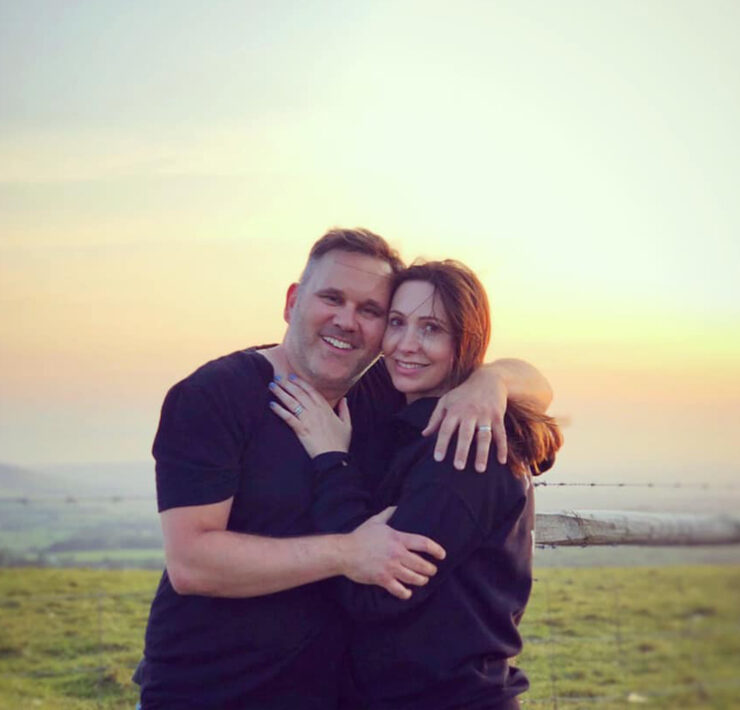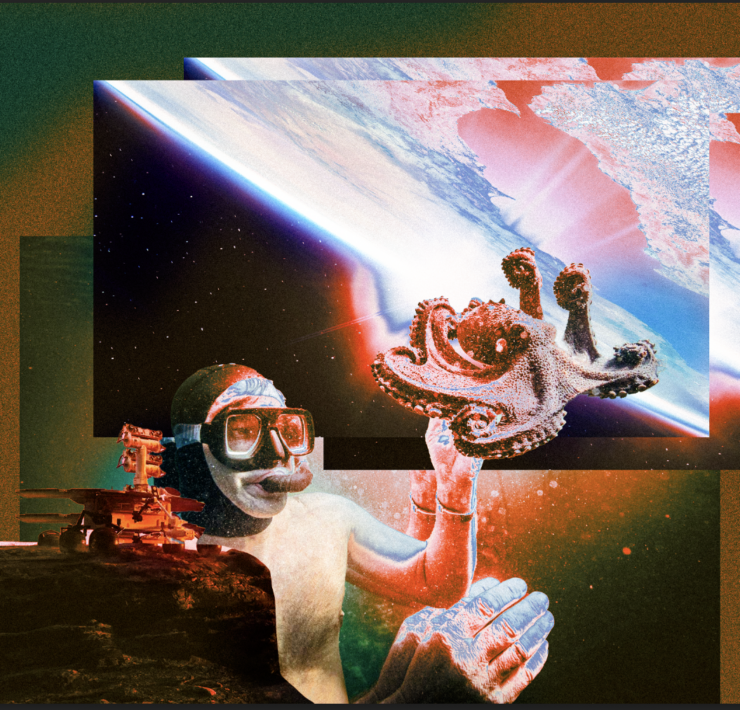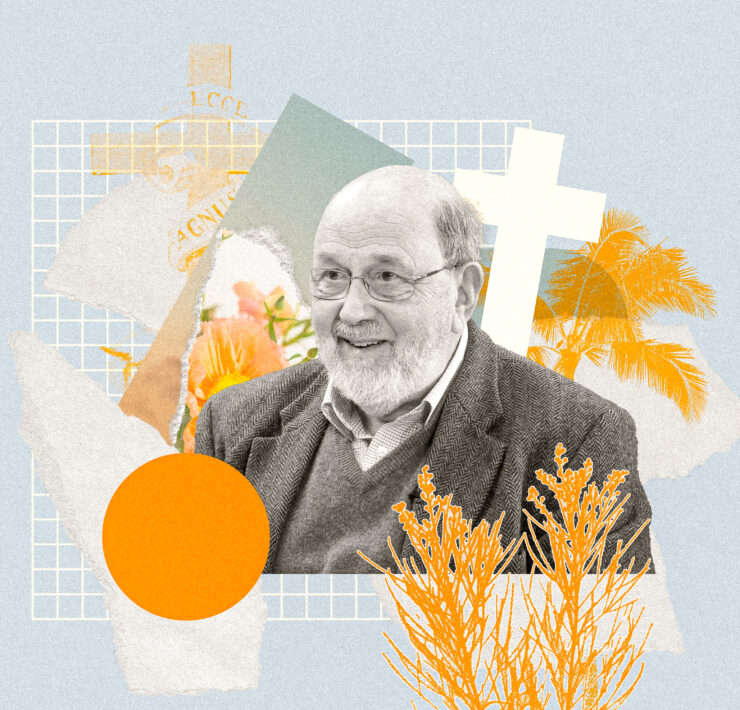
“Maybe I’m naive,” he says. “All I know is I reacted that they were still human beings.”
On the rough streets of Little Italy in Manhattan, where Martin Scorsese spent his childhood, he would watch people who were walking contradictions. The men in his neighborhood could at one moment be cruel and vile, and at the next pious and decent. He would see them commit terrible acts, and then go to Mass.
But Scorsese, who was an altar boy at St. Patrick’s Old Cathedral in New York City’s Fashion District, wasn’t bothered by these contradictions.
“I knew some people growing up, and I knew what they went through,” Scorsese says. “I knew they did bad things; yet I saw them suffering—a person who chooses a way of life and did some bad things who still has decency about them.”
Those early years sent Scorsese on a journey, one he’s remained on for much of his life: an exploration of the tension between the profane and the sacred as they intersect in humanity.
Martin Scorsese is considered perhaps the greatest living filmmaker, with dozens of movies to his credit that are legitimate classics—think Goodfellas, Raging Bull, The Departed and The Wolf of Wall Street to name a few.
Scorsese is clearly a director known for depicting vulgar, violent characters trapped in their own hells. In other words, his exploration into the profane isn’t hard to find.
But his Catholic roots remain central to who he is as well, and they compel him to explore the deeper, spiritual parts of humanity. The profane and sacred, both in the work and life of Scorsese, are inseparable.
“Where do I go to find the meaning of existence and the meaning of life? For me, it’s Christianity,” Scorsese says. “That’s the real saving grace of our world, of our species really. Truth is within the behavior of the daily life of yourself. I know it has to be there. That’s where we get to compassion and love.”
As a teenager in the 1950s, Scorsese was particularly influenced by a young priest, Francis Principe, who introduced him to novels like Graham Greene’s Power of Glory, instilling an appreciation for honest, challenging religious art that contrasted the typically sanguine Christian pop-art of the time.
One of Scorsese’s earliest film ideas was a biographical picture about friends in a Jesuit Seminary called Jerusalem, Jerusalem, which, as one biographer put it, was “street life intertwined with the Scriptures.”
Scorsese wrote a 40-page treatment that detailed plans to re-enact scenes from the Gospels, including the stations of the Cross, and set them in modern-day New York City.
Producers ultimately deemed the project too religious, and Scorsese turned his attention to what would become his first acclaimed film: Mean Streets.
It’s the story of a young hoodlum in spiritual crisis who unsuccessfully tries to remain pure and penitent while maintaining a life of petty crime.
The success of Mean Streets propelled Scorsese into a group of new Hollywood directors with the likes of Francis Ford Coppola, Hal Ashby and Brian De Palma. During this era, films like Bonnie and Clyde, Easy Rider and The Graduate re-wrote the rules of American filmmaking.

And in this new Hollywood, Scorsese directed some the best films of the 1970s and 1980s, including Taxi Driver, Raging Bull and concert documentary The Last Waltz.
After critical success during the first 15 years of his career, Scorsese found the industry pivoting as tent-pole franchises like Indiana Jones and Star Wars set box-office records and turned Steven Spielberg and George Lucas into household names.
These films were in stark contrast from Scorsese’s work at the time, the character study of a live-at-home, celebrity-obsessed comedian with delusions of grandeur in King of Comedy and the “one crazy night in Soho” comedy After Hours—both of which met tepid results.
The next decade found Scorsese expanding into directing studio remakes (The Color of Money, Cape Fear) along with passion projects (The Last Temptation of Christ and Age of Innocence), while returning to the stories of criminals in the heralded epics of Goodfellas and Casino.
But even as his films went in different directions, at the heart of each was a single thread: Martin Scorsese was looking for something.
Mean Streets did more than launch Scorsese’s career: The film solidified his creative vision for turning a camera to stories that center around sin and grace. And when you look at the canon of his work in this light, you can’t help but see it everywhere.
Just like young Scorsese in the streets of Little Italy, his films don’t lead viewers to judgment or glorification of the imperfect players on screen. He simply puts viewers in their shoes.
There were the anguished loners wandering the night in Taxi Driver and Bringing out the Dead, the low-level organized criminals moving toward a violent end in Goodfellas, Casino and The Departed. Even as the bastions of human achievement wrestle with their demons in The Aviator and The Wolf of Wall Street, Scorsese follows characters journeying toward infamy, while seeking to capture their humanity through a depiction of their very ordinary temptations, the betrayal and mistrust in the closest of relationships, their lawless codes of morality and, ultimately, their suffering.
In Taxi Driver, the camera even hangs on the awkward reactions of those around Travis Bickle as scene after scene of personal embarrassment leads to him to seek validation and purpose through redemptive violence.
 We see the allure of organized crime for Henry Hill as he’s ushered past the line into the best seat in the house of the Copacabana nightclub in Goodfellas.
We see the allure of organized crime for Henry Hill as he’s ushered past the line into the best seat in the house of the Copacabana nightclub in Goodfellas.
In every project, Scorsese uses his mastery of film to allow viewers to bear witness intimately to the damaged characters on screen. Never validating or rendering a verdict—yet seeking to provide evidence for an honest understanding of lives that can lead to unfortunate ends.
“You see the tragedy of the people destroyed by it all,” he says. “People say, ‘Semi-gangsters, who cares?’ Gamblers, hookers … the tragedy, the depth of every single person matters.”
The characters in his movies aren’t just criminals and cops, good guys and wise guys. They’re real people, with real problems, looking for real hope.

The struggle between profane and sacred has never merely been realistic for Scorsese. It is real. While, for decades, he remained arguably the most prolific and highly regarded filmmaker of his generation, his personal life suffered.
The late 1970s were filled with “excessive and over-the-top drug use,” as described by one Scorsese biographer, and he would have four different marriages end over the span of 1970 to 1995.
While none of his films from that time were religious, per se (besides the provocative The Last Temptation), Scorsese sees much of his work as getting at something spiritual.
“I felt drawn to those stories,” he explains. “You have that voiceover narration at the beginning of Casino where the narrator explains they were given paradise, and they blew it.
“The paradise in this case, was paradise of sin, Las Vegas. They were cast out. They were cast out for their behavior or their weaknesses, and the beauty of the hubris of the characters.”
Then, Scorsese’s next film, Kundun (a biography of the 14th Dalai Lama), set the stage for the religious tones of what would become a passion project for him: a film adaptation of Silence, the 1966 novel by Shusaku Endo.
The book tells the story of two Portuguese priests who go to Japan in search of their spiritual mentor, who is being held by the Japanese government in an effort to eradicate Christianity from the country. The novel is built like a missionary biography, one with the at-times brutal feel of a Scorsese film.
Silence was, for Endo, the journey to find his real self. It culminates in a moment of extreme violence and despair. As early as 1997, it was rumored that Endo’s book would be Scorsese’s next film. But legal battles, rewrites and actual “next films” kept Scorsese’s Silence adaptation in pre-production purgatory.
In the meantime, he directed Nicholas Cage in Bringing Out the Dead before finding Leonardo DiCaprio, who would become his best collaborator since De Niro. Beginning with 2002’s Gangs of New York, the Scorsese-DiCaprio partnership would produce six films over a 12-year period. The stretch garnered Scorsese four Best Director Oscar nominations, including his only win to date for The Departed.
But something was still missing. The spiritual wanderings of countless characters danced around big questions without asking them directly.
A final step toward Silence, as Scorsese sees it, was directing 2012’s documentary on George Harrison, Living in the Material World. The Beatles guitarist who experienced the pinnacle of fame and fortune found the only place left to look was inward.
“If I hadn’t made that picture, I don’t think I could have made Silence,” he says. “Harrison had everything all at once. You have access to anything you want in the world, and he said, ‘I want to go beyond it.’ And yes, there were some drugs involved, but he went beyond that. He went into meditation, concerned with the spiritual life.”
For Scorsese, a defining draw to Silence and Endo’s work was the book’s re-consideration of the role of Judas in the life of Jesus.
In 2010, Scorsese actually penned the foreword to an edition of Endo’s novel in which he wrote, “Endo looks at the problem of Judas more directly than any other artist I know. He understood that, in order for Christianity to live, to adapt itself to other cultures and historical moments, it needs not just the figure of Christ but the figure of Judas as well.”
Silence’s “problem of Judas” is explored through the character of Kichijiro, a weak man by his own admission, who repeatedly betrays his fellow Christians for his own survival, only to beg Father Rodrigues for absolution time and time again.
Kichijiro’s final act of betrayal leads Rodrigues directly into the hands of his persecutors. The novel wonders if this act of betrayal was necessary to allow Rodrigues to fulfill his journey toward imitating Christ—a theme not new to Scorsese.
“It’s one of the reasons we were attracted to The Last Temptation,” Scorsese says. “Jesus tells Judas that He’s to be crucified. He says, ‘I have to die. I am the lamb. I have to be sacrificed. And you have to set me up.’”
Scorsese adds, “It’s really interesting to me. I’m obsessed with it, of course … This whole situation seemed to need to play itself out. And people had to play their parts. It was a complicated thing. So, Judas may have gotten the worst of it in a way, but without him …?”
Sin and grace. Transgression and forgiveness. Betrayal and sacrifice. These are the themes Scorsese wrestled with throughout his career.
For Scorsese, another key aspect of Christianity found in the relationships of Rodrigues and Kichijiro, and Jesus and Judas, is the idea of being “your brother’s keeper.” It’s a relationship dynamic that Scorsese can now trace back to his own father and younger brother, Uncle Joe, who was the black sheep of the family and in regular need of being looked after by Scorsese’s father.
“How do you deal with the situation where you do everything you can to help, and you know the person’s going to do it again?” he asks. “Let’s say your family member is on drugs or alcohol—it’s a constant work. You can’t say, ‘OK they’ve done it.’ It inevitably falls back on you, and how much can you handle, really? Then it becomes enabling, and being taken advantage of. You don’t know where that [line] is. It’s a lifetime’s work.”
This relationship of brothers and friends living on the verge of betrayal was first in Mean Streets, between Charlie, a low-level mobster and Johnny Boy. It’s also found in Jake and Joey in Raging Bull, Henry and Tommy in Goodfellas, Ace and Nicky in Casino, Jordan and Donnie in The Wolf of Wall Street and it’s what made Father Rodrigues and Kichijiro in Silence interesting to the director. Scorsese hints it’s a theme that we’ll see play out in his next project, too.

This year, Scorsese finally finished Silence. The film represents a 27-year filmmaking journey as well as a search for the essence of his own faith.
“I wanted to get back to the basic impulse of Christianity,” Scorsese says. “What’s the value of it? Is it still the guide for our lives? And if it is, how do we live that out as a guide?”
To answer this question, the film follows two Jesuit priests, Father Rodrigues and Father Garrpe (Adam Driver) in 1638 as they journey from Portugal to Japan to confirm the rumors that esteemed missionary Father Ferreira (Liam Neeson) has committed the inconceivable act of publicly rejecting his faith.
Rodrigues is based on a historical priest, Giuseppe Chiara, and while Silence is a work of fiction, the story takes place in an actual time when the Japanese government sought to remove the 300,000 Christians converts and priests from their country.
In Silence, the now 74-year-old director again asks viewers to witness characters full of conviction, but also full of betrayal and tragic suffering.
Yet, at the heart of this story is the journey through suffering to attempt to understand the love of Christ that sits at the center of the Christian faith.
In a climactic moment in the film, Japanese Christians hang upside down in a pit waiting to die. Their freedom will be granted if the main character, Father Sebastian Rodrigues (played by Andrew Garfield), just places his foot on a stone depiction of the Christ, symbolically rejecting his savior and his God.
It’s a brutal scene. And the story charts a course for Father Rodrigues to his eventual betrayal by fellow Christian, Kichijiro. Rodrigues is given to the Christian oppressors where he must ultimately choose between retaining his faith and saving tortured Japanese Christians.
In prison, Rodrigues is constantly commanded to reject his faith publicly by stepping on what they call the “fumie”—a stone picture of Christ.
But Rodrigues refuses—renouncing his faith would be worse than death. After all, martyrdom was glorious, but to step on this picture of Christ was to embrace a life of shame.
The story crescendos when, after the torture and the senseless killing of others, Rodrigues reconsiders his position.
For the tormented priest, it appears that his entire world hinges on this moment. He can protect innocent people being killed and tortured because of him, or he can step on “the most precious thing in the world that has been living in [his] heart.”
The whole journey has led to this. In a way, too, so does Scorsese’s entire calling—one that started off in the streets of New York as an altar boy searching for his purpose.
The closing scene of Silence is its lone departure from the book. The film depicts a moment of excruciating ambiguity regarding the perseverance of Rodrigues’ faith. Scorsese offers no explanation, only speculation.
But in a way, the choice to depart from the novel and input an indefinite final image—one that signals ambiguity in the struggle between the profane and the sacred—serves as metaphor for Scorsese’s own faith.
“[Faith] is something not to dismiss in the secular world, that’s the key,” Scorsese says.
In the midst of all of his characters’ flaws, doubts and struggles living in a fallen world, Scorsese is looking for truth.
“I wanted that last image to break open, crack the certainty, if you will,” he says. “Don’t discard this: There’s something essential, and there’s a kernel of truth. And maybe there’s the meaning of what we’re doing here.”
Eric is a writer and filmmaker living in Los Angeles, California. His occasional musings on film, God, and pop culture can be found at his blog, pickingupshells.com.









